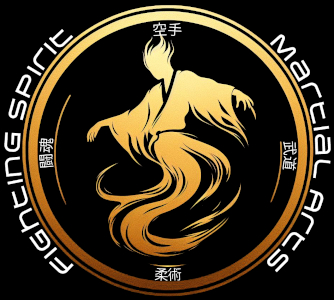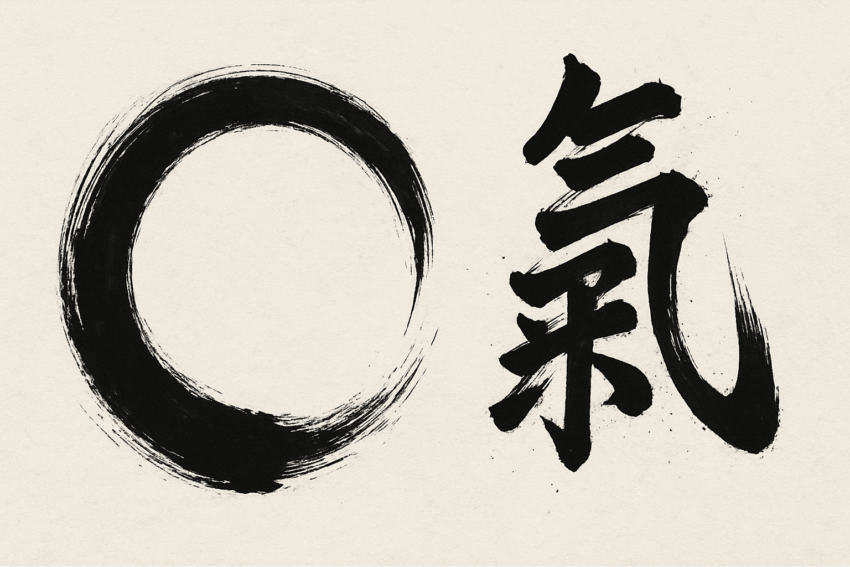The white belt’s eyes rolled so far back I thought I’d need a chiropractor on standby.
“Sensei,” he sighed, “Ki isn’t real. It’s just… nothing.”
“Cool,” I said, “try breathing without it.”
The class went quiet—quiet enough to hear the dojo clock heckling us one tick at a time. And there it was: the paradox of nothing, now wearing a gi and smirking at sceptics. If Ki is merely air-flavoured fairy dust, why has every serious martial tradition—from Okinawa to Shaolin to that boxing coach who swears by ‘flow’—invented a word for the same ungraspable force? How can nothing leave bruises?
So here’s the challenge I tossed him (and now, dear reader, toss you): prove Ki doesn’t matter… by moving with power while pretending intention, breath, and focus are irrelevant. Spoiler: you’ll punch like soggy linguine.
Welcome to the dojo where “nothing” weighs a tonne. Let’s see what you’re really made of—starting with the stuff you can’t hold.
Let’s set fire to the incense and blow it out immediately. We’re not here to summon spirits or harness midichlorians. Ki isn’t about glowing palms or levitating monks (though, full disclosure, if you can do that, please teach me).
Ki, in its barest, sweatiest form, is breath.
It’s the exhale just before you strike.
It’s focus, forged in the furnace of repetition.
It’s the tension in your muscles before you move—and the release that lets the strike land.
Think of Ki as structured absence. Like the tension in a bowstring before release. Like the silent beat just before the music drops. It’s not what you see—it’s what you feel, right before something happens. That moment of pregnant stillness before the storm.

In physics terms, it’s potential energy. In martial arts, it’s presence. The invisible force that organises body, breath, and will into something coherent. Ki is what makes a punch arrive as a statement, not a suggestion.
It’s not mystical. It’s just that most people are too distracted, too disconnected, to notice the subtleties of how their own bodies move through space. But once you do—once you really pay attention—you’ll feel it humming beneath the surface.
No crystals required. Just awareness. And maybe a little sweat.
And it turns out this “awareness” has a passport.
You can call it Ki, Chi, Qi, Prana, Pneuma, Ruach, or—sure—the Force, Luke. Every culture that bothered to watch people breathe or fight—or both—eventually tripped over the same invisible thread. Different names, same itch.
In Japan, it’s Ki (気). Not just “energy,” but breath, spirit, intention, weather, even mood. If someone’s got bad Ki, it’s not just bad vibes—it’s a storm system rolling in behind their eyes.
In China, it’s Qi (氣). Not to be confused with that $10 knock-off energy bracelet from the internet. Here, Qi flows through meridians, animates the body, and balances heaven and earth. Martial arts like Tai Chi and Wing Chun don’t just use Qi—they surf it.
Even the West, ever sceptical, couldn’t help but name the unnameable. The Greeks had pneuma—the breath of life. The French called it élan vital. Christianity spun it into the Holy Spirit—not a person, but a force that moves through you. Sound familiar?
They’re all pointing at the same thing: the sensation that we are more than meat and math. That something invisible connects breath to motion, mind to muscle.
You don’t have to believe in Ki the way you believe in gravity. But good luck arguing with it when it’s moving through you.
Because something’s missing when it isn’t.
You can learn all the kata. You can memorise the footwork, drill the strikes, recite the bunkai in your sleep. But if there’s no Ki behind it? You’re just performing interpretive dance in thick, canvas pyjamas.
I’ve seen it—hell, I’ve done it. That hollow punch. The limp block. The kick that technically connects but somehow feels… apologetic. It’s all choreography—limbs moving without conviction, like a puppet who forgot what it’s fighting for.
Technique is just architecture. Ki is the tenant.
You can throw a thousand punches without it, and each one will land like a note in a song no one wants to hear. But the moment Ki enters the room—when breath, focus, and intention align—suddenly the punch means something.
It’s not louder.
It’s not faster.
It’s real.
That’s the difference. Presence. Connection. Gravity in motion. Without Ki, martial arts are just choreography. With it? They’re a conversation with the universe—one where you get to talk and hit things.
The next time someone says they “don’t believe” in Ki, watch how they move. Then watch someone who does. It’s not magic. But it damn sure feels like it.
I didn’t believe in Ki either. Not really.
I’d nod along during explanations, sure, but inside? I chalked it up to dojo folklore—like pressure points that make people spontaneously weep or masters who can knock you over with a glare.
Then one day, during a partner drill, I felt it.
It wasn’t the strike itself—it was what came back. My partner delivered a simple, well-timed shot to my midsection. I braced, absorbed… and then something odd happened. The energy didn’t just stop. It moved through me, coiled around my spine, and—somehow—shoved me from the inside.
It wasn’t pain. It wasn’t magic. It was feedback. Like hitting a tuning fork and hearing your own bones hum.
That was the moment the floor shifted. I realised I’d been treating Ki like seasoning—something optional. But it was fuel. The next step was learning to direct it, to focus it—not just outwards in a strike, but inward too, like lighting a lantern behind my ribs.
When you get it right, the body stops feeling like a collection of parts. It becomes one thing. Breath, thought, movement—aligned. Not flashy. Not mystical. Just right.
And once you’ve felt it? You can’t unfeel it.
If you’re still with me, good. That means some part of you—skeptical or not—is curious.
So try this.

Start with hara breathing. Sit or stand tall, drop your awareness into your lower abdomen (tanden), and breathe deep—not into your chest, but into your centre. You’re not just oxygenating; you’re anchoring. Feel that subtle heat? That’s Ki. Not mystical—just mechanical awareness turned inward.
Next, play with tension. Hold a stance. Focus on creating internal structure—feet gripping the floor, spine suspended like a steel cable. Now move without losing that internal integrity. That’s Ki too: the difference between collapsing into a strike and rising through it.
Still skeptical? Good. Try this: throw a punch without any intent. Just go through the motion. Looks fine. Feels… empty. Now take a breath, settle your weight, decide to hit—then go. You’ll feel the difference. So will your partner.
Ki isn’t something I can sell you. It’s not a patch or a pressure point. It’s something you demonstrate, moment by moment, in how you move and how you breathe. The moment you stop pretending it’s not there—you’ll feel it.
And if Ki is nothing… then so is gravity—until you fall.
So is rhythm, until the song moves you.
So is love, until it leaves a dent.
What you can’t touch still shapes you.
What you can’t see still moves you.
You don’t have to call it Ki. You can call it focus, breath, will, alignment—whatever makes you less itchy. But don’t write it off just because it isn’t measurable in joules.
Experience it.
Test it.
Train with it.
Doubt it—even. But don’t dismiss it.
“Ki isn’t a belief. It’s a sensation. And you’ve felt it before—even if you laughed at the name.”

